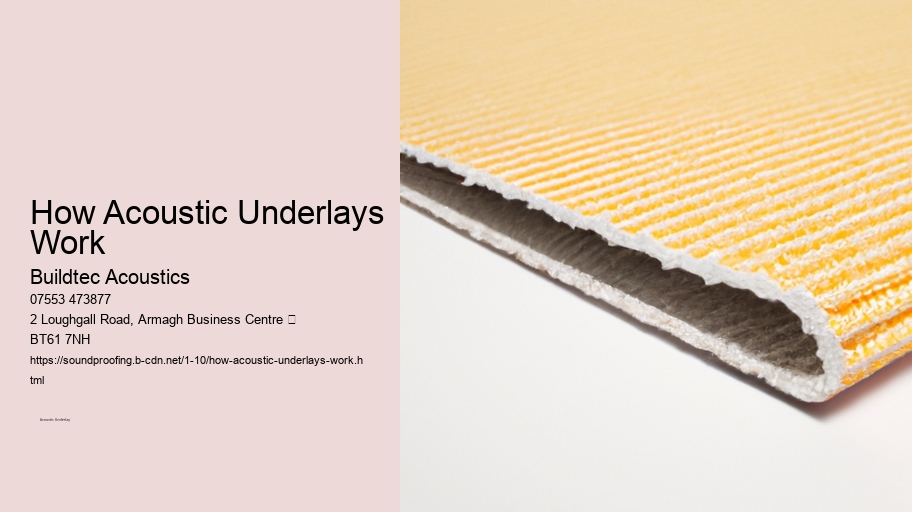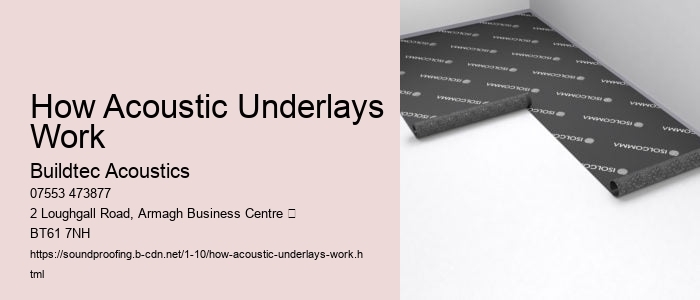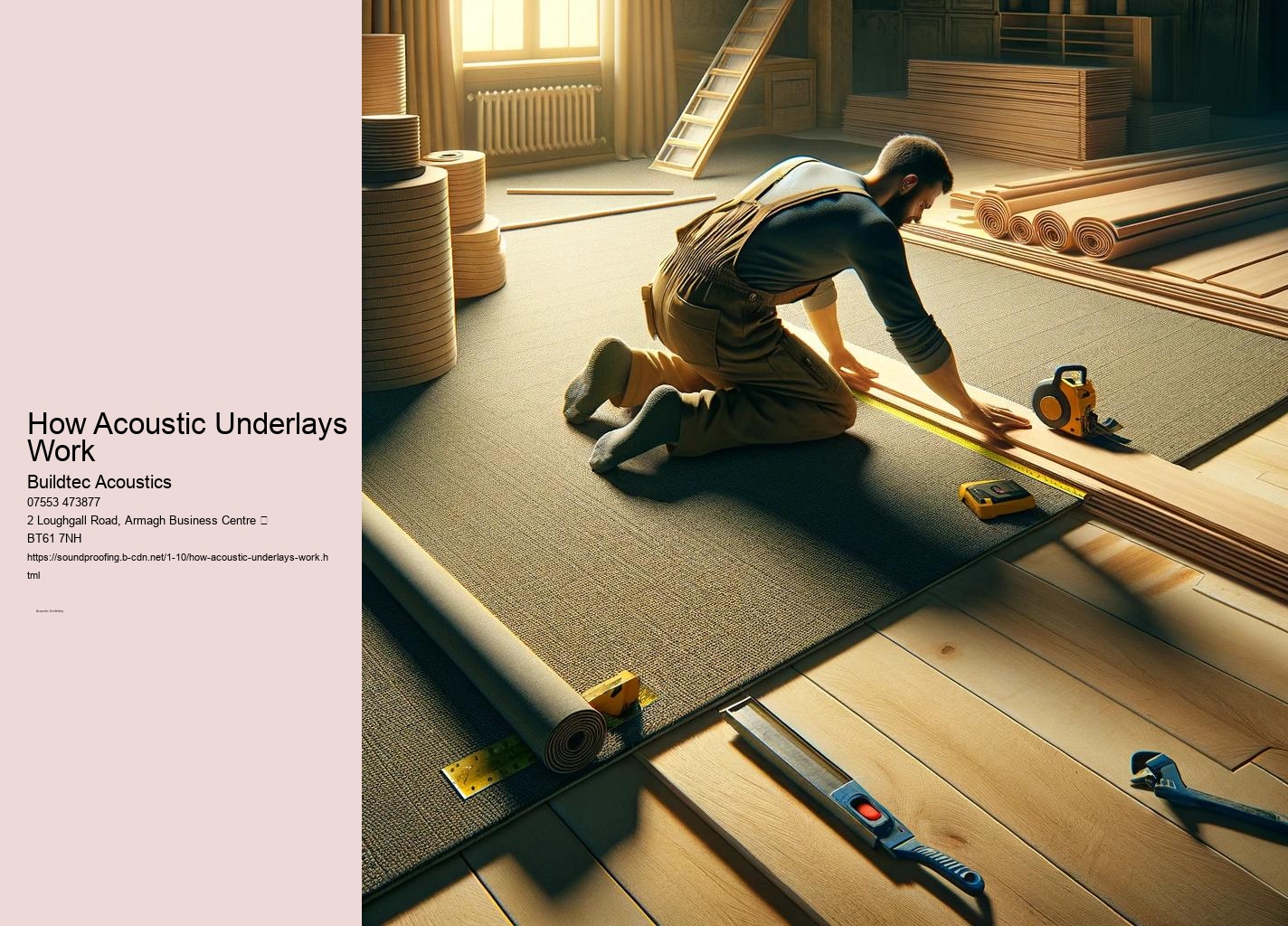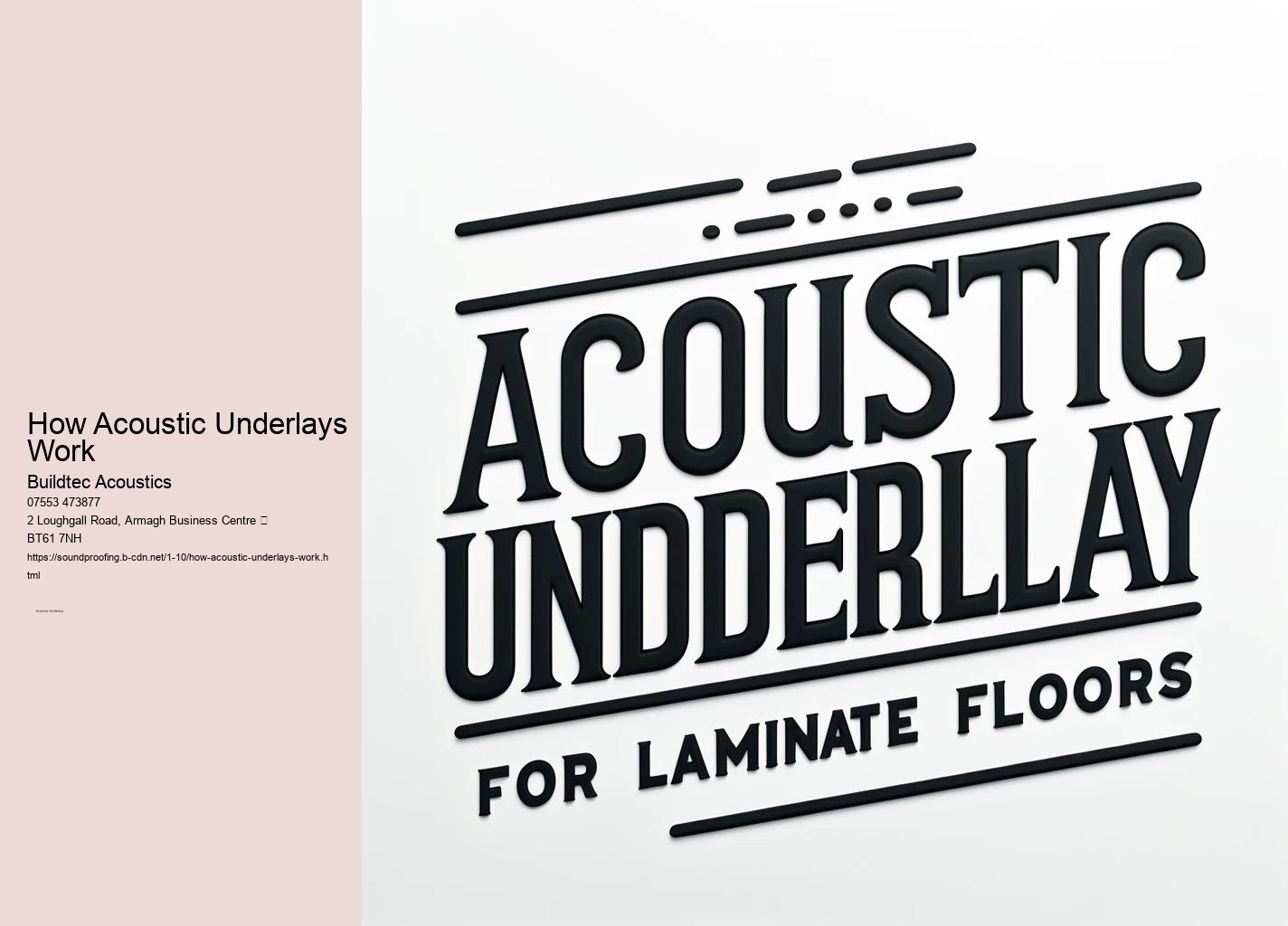

Acoustic underlays function by absorbing and dissipating sound energy, which minimizes noise transmission through flooring. Adhesive or double-sided tape can be used to secure the underlay in place, while ensuring tight seams between pieces to prevent gaps that may reduce performance. Whether in a single-family detached home or a semi-detached house, the installation of acoustic underlay ensures that everyday activities do not negatively affect others in the space.
Acoustic underlays made from polyvinyl chloride (PVC) or cork are ideal choices, as they balance both thermal insulation and soundproofing requirements. Acoustic underlays are compatible with a wide range of flooring materials, including tiles, carpet, and wood.
Acoustic underlays are valuable for renovation projects as well. Environmental considerations are central to the design of acoustic underlays.
From addressing noise pollution to improving energy efficiency, acoustic underlays are a versatile solution that supports both functionality and aesthetics in modern building design. Looking to dampen noise in your office then use acoustic underlay under your floor. This process involves transforming sound energy into heat, which then dissipates without causing disturbances.
With a wide variety of materials, including cork, foam, natural rubber, and recycled fibers, Buildtec Acoustics ensures that there is an environmentally friendly and efficient product to meet every need.
Exploring the sustainable aspects of acoustic underlays.

Posted by Francis Mckenna on
How acoustic underlays improve room acoustics and reduce unwanted noise.

Posted by Francis Mckenna on
How acoustic underlays can help isolate vibrations in buildings.

Posted by Francis Mckenna on
They are installed beneath the visible flooring material, meaning that the desired flooring-whether elegant hardwood, practical laminate, or cozy carpet-remains unchanged. Including acoustic underlays in renovation projects also helps ensure compliance with building insulation standards and soundproofing regulations, providing peace of mind to homeowners and builders. The primary function of acoustic underlays is to address both impact noise and airborne sound.
By utilizing high-density materials such as crumb rubber and cork, acoustic underlays provide efficient noise control, reducing the impact of sound on occupants in adjacent rooms or units. Before installing an acoustic underlay, it is essential to ensure that the subfloor-whether concrete, particle board, or cement-is clean, level, and dry.
The use of recycled fibers and materials helps promote recycling, while minimizing the environmental footprint of soundproofing installations. Underlays help to isolate vibrations, preventing them from being transmitted through the building structure and reducing their impact on adjacent rooms or units.
Underlays help isolate vibrations, preventing them from being transmitted through the structure of the building, and reducing the impact on adjacent rooms or units. Some underlays are certified by Leadership in Energy and Environmental Design (LEED) standards, supporting sustainable building practices.


This helps improve communication between occupants by reducing noise interference. When considering soundproofing methods, acoustic underlays provide a reliable option for reducing noise pollution, enhancing room acoustics, and creating a quieter and more comfortable atmosphere. Impact noise, such as footsteps on laminate flooring or vibrations from appliances, can be minimized using dense materials like natural rubber or foam.
Including acoustic underlays in renovation projects also helps ensure compliance with building insulation standards and soundproofing regulations, providing peace of mind to homeowners and builders. This process involves converting sound energy into heat, which then dissipates without causing disturbances.
They are installed beneath the visible flooring material, meaning that the desired flooring-whether it is elegant hardwood, practical laminate, or cozy carpet-remains unchanged. Acoustic underlays made from polyvinyl chloride (PVC) or cork are ideal choices, as they balance both thermal insulation and soundproofing requirements.
In commercial environments, reducing noise pollution creates a more productive and pleasant work environment, which enhances overall efficiency. Floating floor systems also benefit from acoustic underlays, which provide an extra layer of soundproofing beneath the flooring material.
Acoustic underlay is an essential material for effective noise control in both residential and commercial spaces. By reducing both airborne and impact noise, these underlays contribute to creating a peaceful environment, whether at home, in the office, or in a commercial setting. In rooms with underfloor heating, selecting an underlay with low thermal resistance allows heat to transfer efficiently without being blocked by the soundproofing material.
Whether in a single-family detached home or a semi-detached house, the installation of acoustic underlay ensures that daily activities do not negatively affect others. They are particularly effective when used with materials like ceramic tiles or floating floors, providing both sound insulation and comfort underfoot.
Acoustic underlays do not compromise the aesthetics and design of the finished floor. The choice of acoustic underlay also depends on the type of noise that needs to be controlled.
The choice of acoustic underlay depends on the type of noise that needs to be managed. Acoustic underlays are versatile and can be used in a variety of settings, from residential homes to commercial spaces like offices or retail environments.


By using high-density materials like crumb rubber and cork, acoustic underlays efficiently control noise, reducing its impact on people in adjacent rooms or units. Acoustic underlays help absorb these sounds, resulting in better room acoustics. environmentally friendly This process involves energy transformation, where sound waves are absorbed and converted into heat, which then dissipates harmlessly.
By selecting the right product for the specific noise control requirement, homeowners and businesses can create a quieter, more comfortable atmosphere. Floating floor systems also benefit from acoustic underlays, which provide an additional layer of soundproofing beneath the flooring material.
Underlays help to isolate vibrations, preventing them from being transmitted through the building structure and reducing their impact on adjacent rooms or units. Including acoustic underlays in renovation projects also helps ensure compliance with building insulation standards and soundproofing regulations, providing peace of mind for homeowners and builders.
Buildtec Acoustics offers underlays made from environmentally friendly materials, such as cork, recycled crumb rubber, and natural wool. Installing acoustic underlay beneath wood or laminate flooring can significantly reduce noise levels in rooms.
By reducing both airborne and impact noise, these underlays contribute to creating a peaceful environment, whether in the home, office, or commercial settings. Before installing an acoustic underlay, it is important to ensure that the subfloor-whether concrete, particle board, or cement-is clean, level, and dry. These materials also provide thermal insulation, enhancing the thermal resistance of the room while effectively managing noise levels.
In homes, whether it is a single-family detached home or a semi-detached house, the installation of acoustic underlay ensures that everyday activities do not have a negative affect on other occupants. In conclusion, acoustic underlays from Buildtec Acoustics provide an effective solution for soundproofing floors, enhancing room acoustics, and improving overall comfort.
The choice of acoustic underlay depends on the type of noise that needs to be managed. Before installing an acoustic underlay, it is essential to ensure that the subfloor-whether concrete, particle board, or cement-is clean, level, and dry.
Acoustic underlays help to absorb these sounds, resulting in improved room acoustics. Before installing an acoustic underlay, it is important to ensure that the subfloor-whether concrete, particle board, or cement-is clean, level, and dry.

Yes, acoustic underlays provide thermal insulation by adding an extra layer between the flooring and the subfloor. This helps to maintain a comfortable temperature in the room and can also contribute to energy efficiency by reducing heat loss.
Acoustic underlays are highly effective in reducing both airborne and impact noise. Their ability to absorb sound vibrations makes them ideal for improving room acoustics and creating a quieter environment. The effectiveness varies depending on the material and thickness of the underlay.
No, acoustic underlays are installed beneath the visible flooring material, meaning they do not affect the appearance of your floor. They work effectively without altering the aesthetics of the chosen flooring, whether it is hardwood, laminate, or carpet.
Common materials used in acoustic underlays include cork, foam, natural rubber, and recycled crumb rubber. Each material offers unique properties for noise reduction and thermal insulation, allowing users to select the best option for their specific needs.